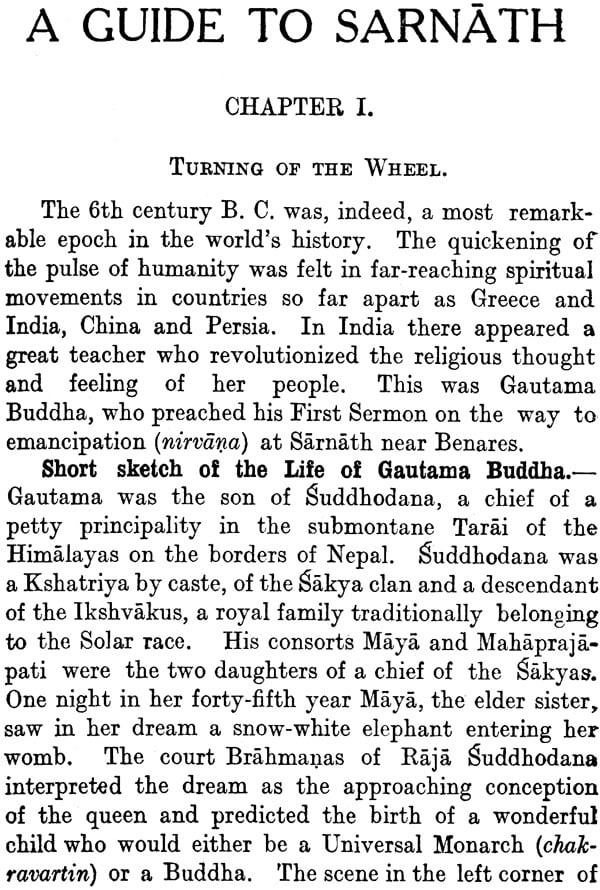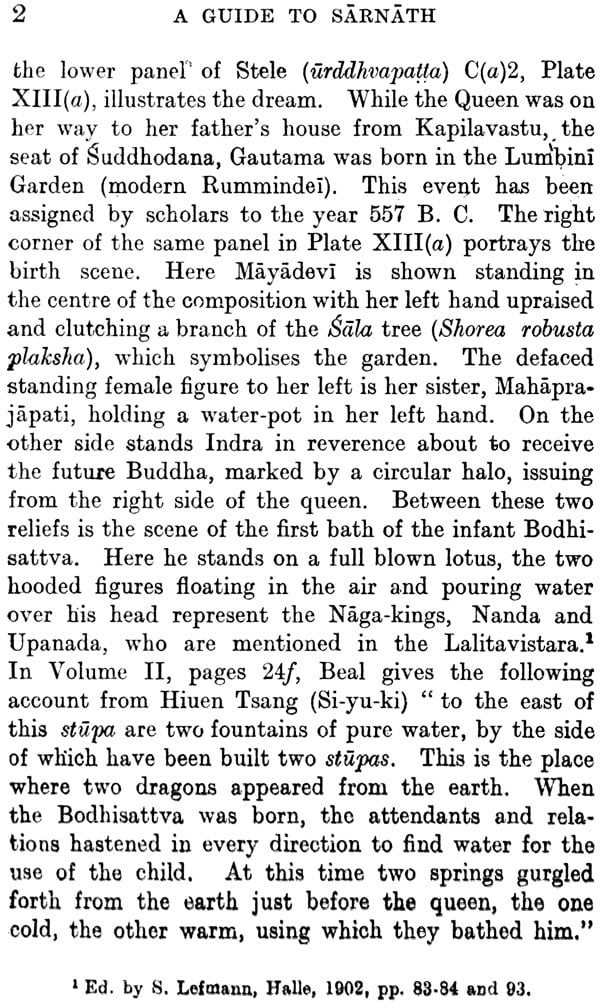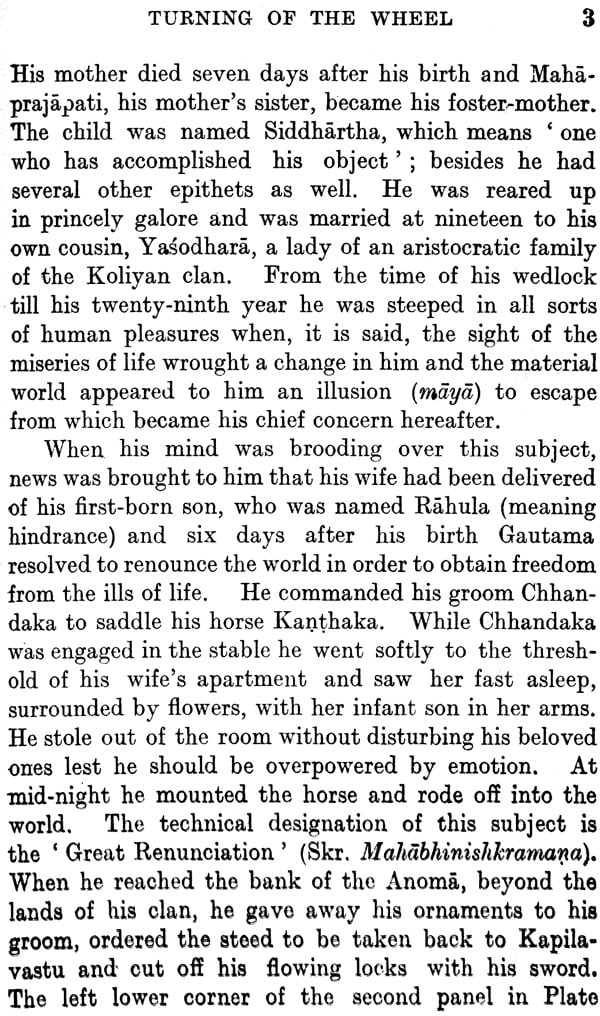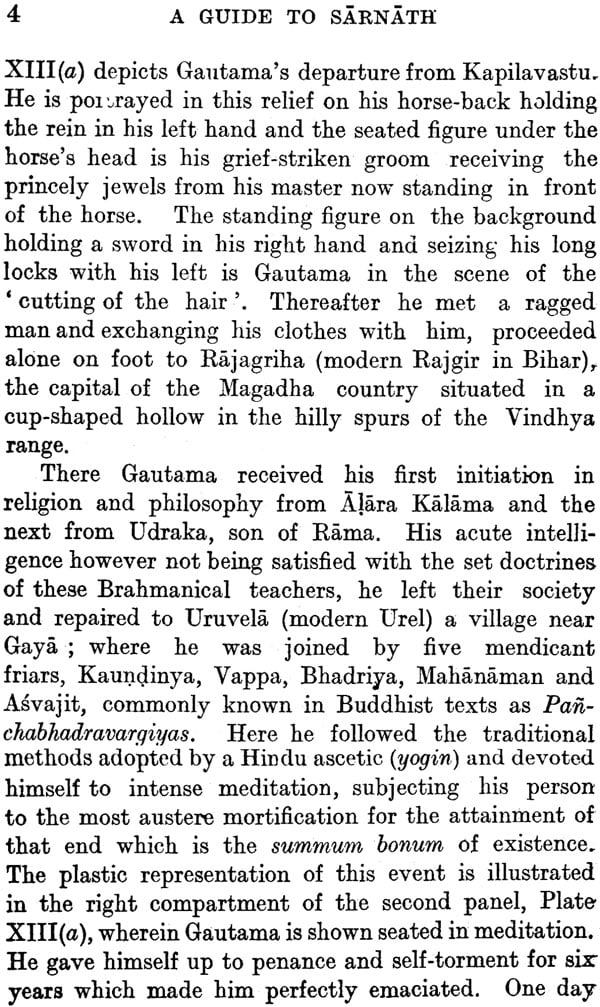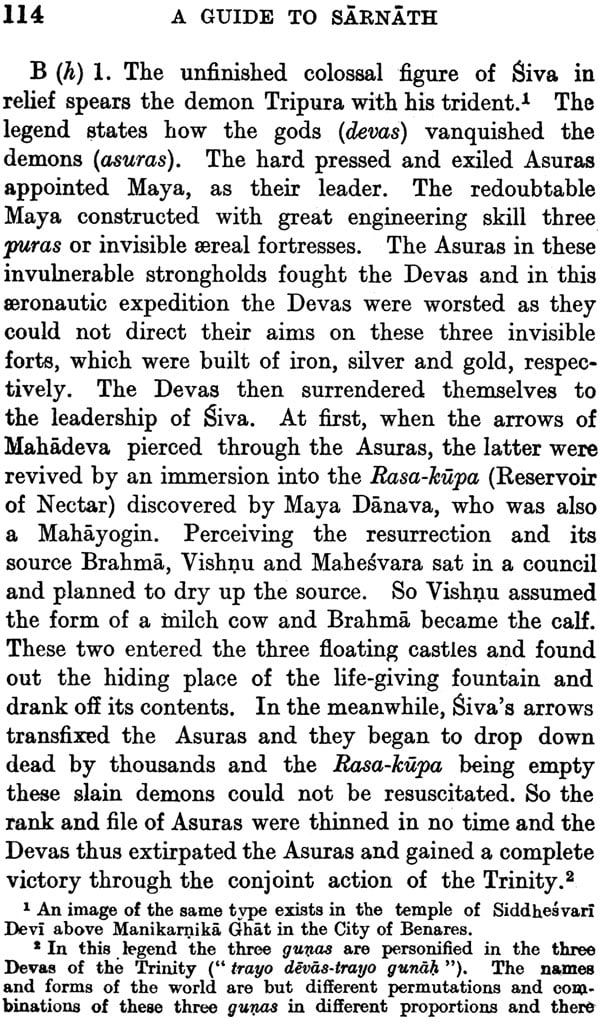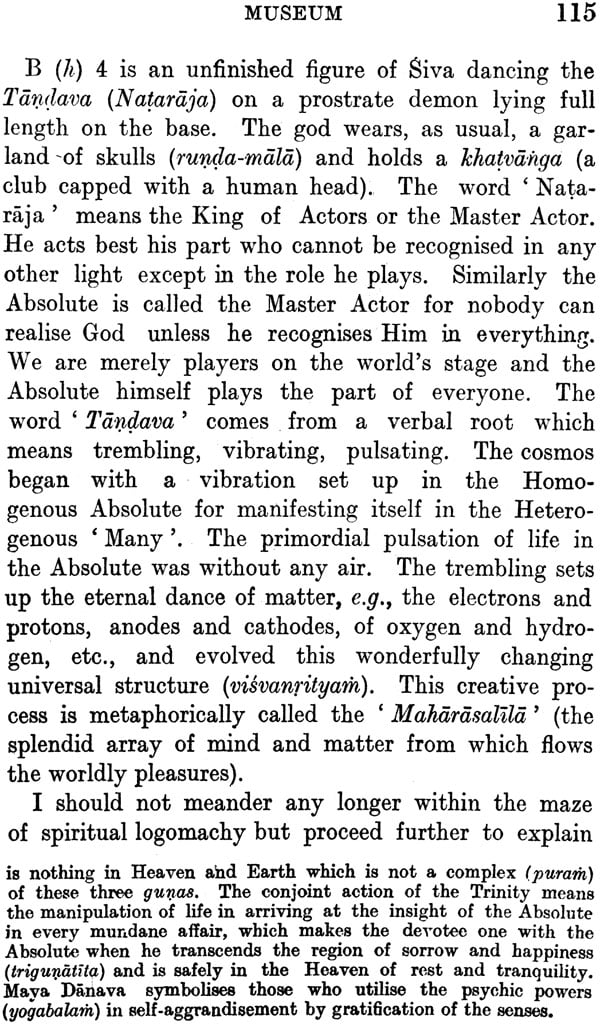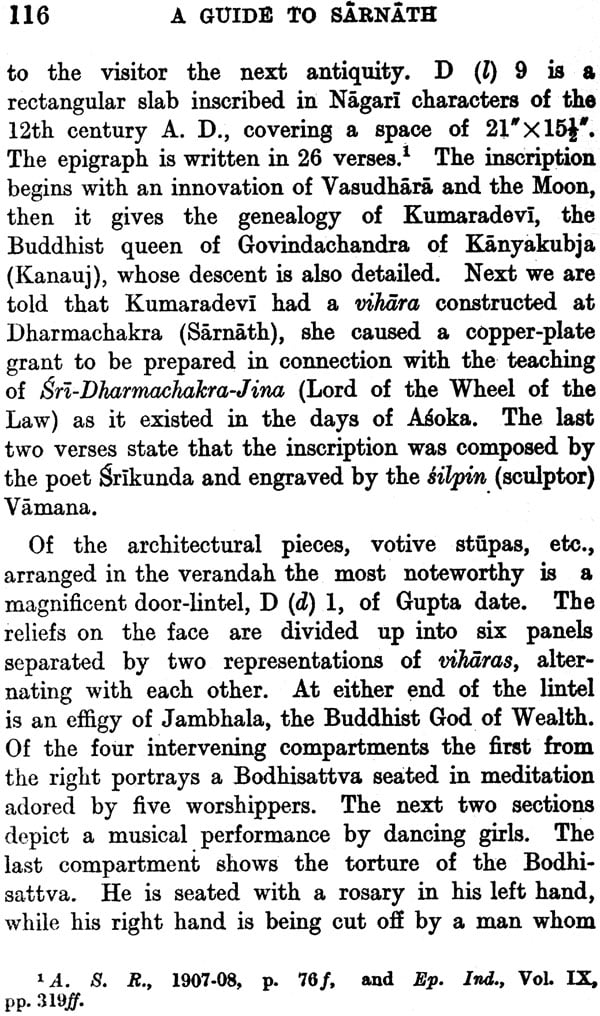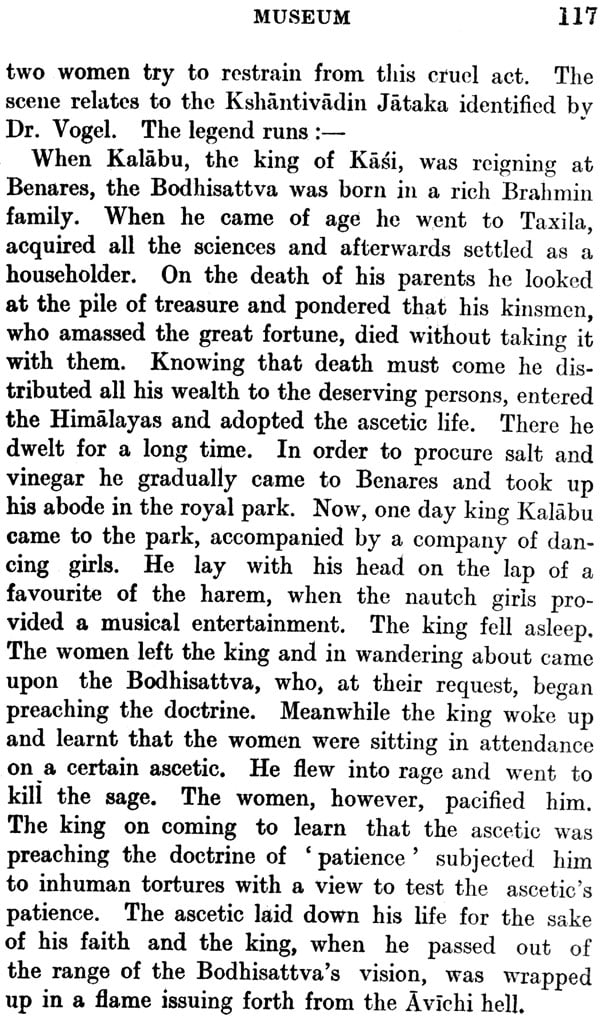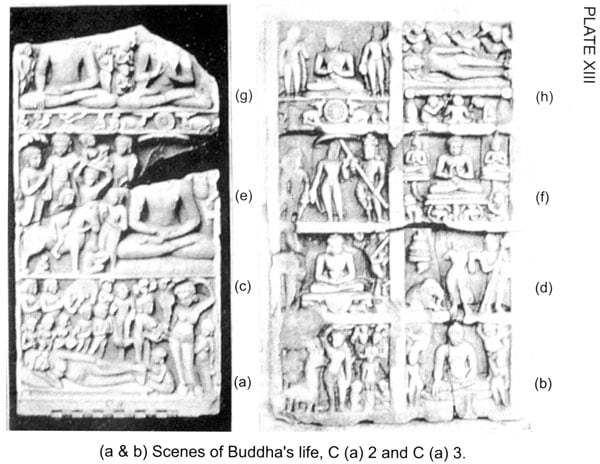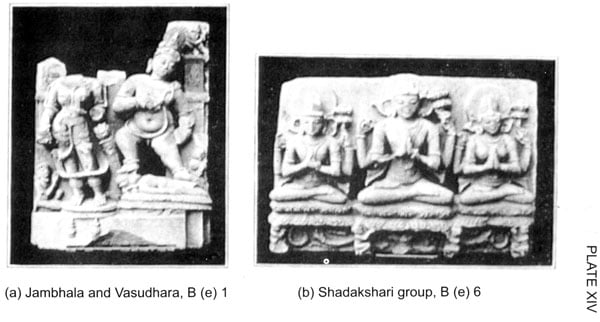
A Guide To Sarnath
Book Specification
| Item Code: | IDI981 |
| Author: | B. Majumdar |
| Publisher: | Pilgrims Publishing |
| Language: | English |
| Edition: | 2007 |
| ISBN: | 8177690795 |
| Pages: | 122 (16 Black & White Illustrations plus One Map) |
| Cover: | Paperback |
| Other Details | 7.0" X 4.7" |
Book Description
Back of the Book
Among the places in India of interest to Indian and foreign tourists and pilgrims, Sarnath must surely rank near top of the list.
Located a few kilometers from Varanasi, the holiest city of the Hindus, in Uttar Pradesh, Northern India, Sarnath is the spot where Buddhism first saw light of day. Here in the beautiful Deer Park is where the Buddha preached his First Sermon. Tucked away amongst mango groves, the Deer Park still preserves the peaceful charm of that it had on that day when Buddha first expounded his solution to the mystery of life to his five followers.
This guidebook is a mine of information on the religious, historical and artistic background and takes you on a guided tour around all the monuments and the Museum of Archaeology.
After traveling so far to see Sarnath, you owe it to yourself to really understand what you are seeing.
"The reader is provided with a description of the principal monuments and an interpretation of the symbolic animals which are carved on the Lion Capital. Finally, there are some philosophical explanations on the most important inscriptions "- Frank E Reynolds, Guide to Buddhist Religion.
PREFACE
At the request of the readers of my 'Sarnath Vivaran' I am presenting my English Edition to the non-Bengali visitors to Sarnath, which, I hope, will help them in studying the monuments and antiquities unearthed there by the Archeological Department. In the First Chapter before describing the First Sermon preachedby the Sakya sage at the Deer Park I have briefly sketched the life of the Great Master with particular reference to the Stele C (a) 2, Plate XIII (a). I am thankful to my friend, Pandit Deshraj Sharma, M.A., M.O.L., for translating for me the original texts relating to the Nigrodhamiga Jataka and the First Sermon for inclusion therein. In the Second chapter I have narrated the History of Sarnath based on the antiquarian data revealed there and supplemented it by a comparative study of sculptural art exhibited in the Museum. The Third Chapter of the book, which describes the principal monuments brought to light at Sarnath, is culled from the accounts of excavations that appeared in the publications issued by the Archeological Survey of India. The red line in the Plan of Excavations (Plate I) indicates the route to the ruins of the Deer Park, which the visitor is required to follow when inspecting the excavated site as the monuments in this Chapter are arranged in that order. In the Fourth Chapter I have ventured to offer a different interpretation of the symbolic animals carved on the Lion Capital (A1, Plate VI), tried to explain the philosophical significance of some of the Brahmanical sculptures detailed therein and incorporated the texts and translations of important inscriptions which, I believe, will be of some use to the students of Epigraphy.
I am indebted to Rao Bahadur K. N. Dikshit, M.A., Deputy Director General of Archeology, who had kindly gone through my manuscripts and honoured me by writing a valuable introduction to it. The materials discovered at Sarnath deserve a comprehensive treatment but for a Guide-book I have achieved that object it is for the reader to judge.
Introduction to the New Edition
Sarnath, the seat of Buddhism, is considered to be the Mecca of ht eBuddhist world. It is the place where the renowned Sakya Muni first started his ministry with the proclamation of the 'Dhamma' or 'Wheel of the Law'. Located close to the sacred city of Varanasi, it has always fascinated visitors worldwide.
This ancient site was the starting point of the greatest revolution the known world has ever experienced. From the earliest times this site had been the congregating place for sages and mendicants alike. It had been a place where yogis and aspirants went through the most difficult practices to achieve the highest mental state that man can attain. This was the place chosen by Goutam Buddha to introduce his new and most radical approach to achieving Nirvana, or liberation from the cycle of birth and death.
Mazumdar takes us through the historical steps taken by the Sakya Muni and has brought alive Rishipatana (Isipatana) as it was at that time. He carefully takes us through its rise and finally through its downfall due to internecine wars and Islamic invasions, These raiders left behind only what is left there for us to see today.
With the establishment of the Archaeological survey of India and a growing interest of the intelligentsia in India the desecration of this historical site was finally stopped. It is this site that Mazumdar goes on to describe. He vividly explains the most rare and beautiful artifacts found at this site.
Though written before world war II, the maps and illustrations provided are extremely accurate and informative. They provide a basis for the extensive exploration of this ancient site. Despite many administrative changes in recent years in addition to the construction of many new Buddhist temples, the basic site as described and illustrated in this work has not changed. This book remains the perfect guide to this ancient and historical treasure.
| Chapter I. | ||
| Turnign of Wheel | 1 | |
| Short sketch of Life of Goutama Buddha | 1 | |
| Rishipatana or Mrigadava | 9 | |
| Buddha's arrival at Sarnath and preaching of First Sermon | 12 | |
| Chapter II | ||
| History | 20 | |
| Maurya Period | 21 | |
| Sunga Period | 25 | |
| Andhra Period | 26 | |
| Kushana period | 26 | |
| Gupta period | 29 | |
| Sarnath in the 6th and 7th centuries A.D.,Hiuen Tsang's visit | 34 | |
| Kanyakubjaraja Yasovarman:Pratihara dynasty | 36 | |
| Inscription of Mahipala | 36 | |
| Stone Inscription of A.D.1053 | 37 | |
| Gaharwar dynasty; Kumaradevi inscription; Muhammadan invasion | 37 | |
| Destruction of Dharmarajika Stupa by Jagat Singh | 38 | |
| History of Explorations | 38 | |
| ChapterIII: | 43 | |
| Chaukhandi Stupa | 43 | |
| Monastery V | 45 | |
| Monastery VII | 46 | |
| Dharmarajika Sstupa | 46 | |
| Main Shrine | 48 | |
| Monolithic Railing | 49 | |
| Asoka Pillar | 53 | |
| Area West of Main Shrine | 56 | |
| Area North of Main Shrine | 57 | |
| Monastery Area | 59 | |
| Dharmachakrajinavihara (Monastery I) | 60 | |
| Monastery II | 63 | |
| Monastery III | 64 | |
| Monastery IV | 66 | |
| Brahmanical Sculpture Shed | 69 | |
| Jaina Sculptures | 74 | |
| ChapterIV: | ||
| Musrum | 78 | |
| Lion Capital | 78 | |
| Bodhisattva and Buddha images, etc., in Room No.I | 83 | |
| Bas-reliefs, Steles and other sculptures in Room No.II | 101 | |
| Krishna holding the Govardhana Hill, Marichi. Colossal figure of Siva and other aniquities in Room No.III | 105 | |
| Kshantivadin Jataka in the verandsh | 116 | |
| Bibliography | 119 |
